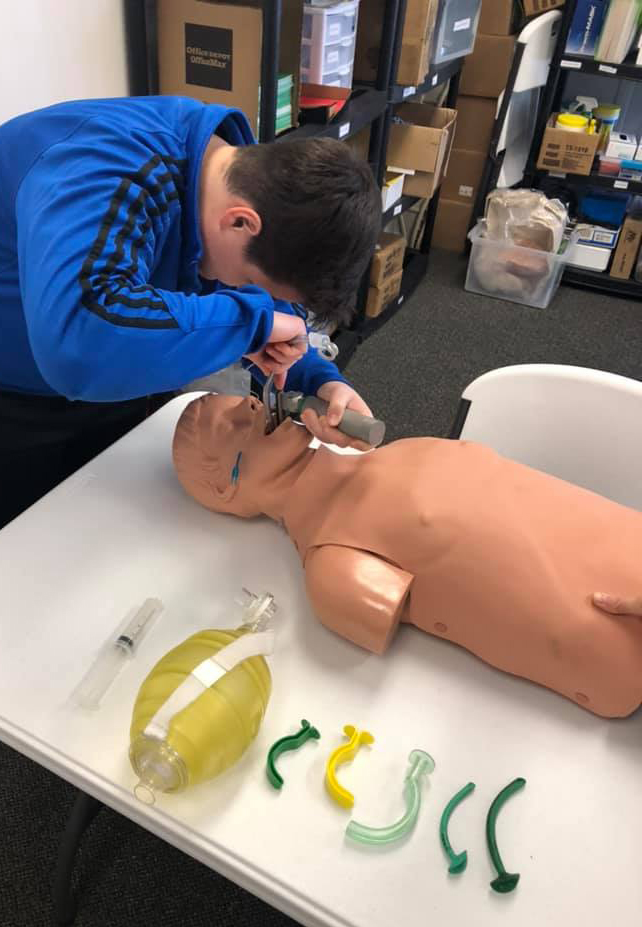Cardiac arrest is a medical emergency where every second counts and the outcome depends largely on the quality of the CPR (Cardiopulmonary Resuscitation) provided. One of the most critical elements of effective CPR is maintaining a high chest compression fraction (CCF). A higher CCF increases the chances of survival and can significantly improve a patient’s recovery. In this article, we will explore what chest compression fraction is, why it’s so important, and how you can achieve a high CCF during a resuscitation effort. By understanding and implementing the right strategies, you can improve your CPR performance and save lives.

Understanding Chest Compression Fraction (CCF)
Chest compression fraction (CCF) refers to the percentage of total CPR time that is spent performing chest compressions. In simple terms, it is the proportion of time during a resuscitation event that compressions are being delivered to the patient’s chest. The higher the CCF, the more effective the CPR, as continuous chest compressions are vital for maintaining blood flow to the heart and brain. CCF can be calculated by dividing the time spent on compressions by the total time of the resuscitation effort.
The American Heart Association (AHA) recommends that rescuers aim for a CCF of at least 80%. This means that 80% of the time during the CPR process should be dedicated to chest compressions, with minimal interruptions. Maintaining this high percentage ensures the patient’s vital organs receive the oxygenated blood they need during the critical moments of cardiac arrest.
However, achieving a high CCF is not always easy. Several challenges can reduce the amount of time spent on compressions, such as pauses for rhythm checks, administration of ventilation, or the transition between rescuers. These interruptions can lower the effectiveness of CPR, decreasing survival chances. By overcoming these obstacles, we can ensure a higher CCF and better outcomes for patients.
Strategies to Achieve a High Chest Compression Fraction
Achieving a high chest compression fraction requires a combination of skills, teamwork, preparation, and constant practice. The following strategies can help you maintain a high CCF during a resuscitation effort.
1. Minimizing Interruptions
The most important factor in achieving a high CCF is minimizing interruptions to chest compressions. Every time you stop compressions, you reduce the flow of blood to the heart and brain, decreasing the patient’s chances of survival. It is essential to avoid unnecessary pauses, such as those during rhythm checks or ventilation.
Proper timing is crucial. For example, defibrillation should be performed quickly and efficiently, without prolonged interruptions to compressions. Once a shock is delivered, compressions should resume immediately. Working in teams, the compressor can focus on chest compressions while another team member handles the defibrillator or checks the patient’s rhythm, ensuring that pauses are minimized.
2. Efficient Teamwork and Communication
High-performance CPR relies heavily on effective teamwork and communication. When performing CPR, every second matters and clear coordination is vital. Assigning specific roles to each team member can streamline the process and reduce confusion during the resuscitation. One person should be responsible for chest compressions, another for monitoring the defibrillator, and others for airway management and ventilation.
Training in coordinated efforts is essential. Repeated practice in a team setting ensures that everyone knows their responsibilities and can execute their roles with precision. By creating a smooth workflow and reducing unnecessary confusion, you can maintain a high CCF and improve the overall effectiveness of CPR.
3. Preparation and Equipment Readiness
Being fully prepared and ensuring all equipment is readily available can make a significant difference during resuscitation. Make sure that all CPR equipment, including an automated external defibrillator (AED), oxygen supplies, and airway management tools, are easily accessible and functional. Time lost searching for equipment or dealing with malfunctioning devices can detract from the time spent on chest compressions.
The transition between rescuers is another critical factor in maintaining a high CCF. When switching roles, it is important to do so smoothly and without delay. Having a plan for role rotation—such as swapping compressors every two minutes—can prevent fatigue and ensure that chest compressions remain strong and effective.
4. Skill Proficiency
Maintaining proficiency in CPR skills is essential for achieving a high CCF. Regular practice and recertification are key to keeping your skills sharp. The correct technique for chest compressions involves pressing down to a depth of at least two inches at a rate of 100 to 120 compressions per minute. Consistent practice helps to develop muscle memory, allowing you to perform compressions with the right depth and speed under pressure.
Feedback devices, such as real-time compression monitors, can be extremely helpful in training. These devices provide instant feedback on your compression depth and rate, allowing you to adjust as needed and fine-tune your technique. This real-time feedback helps to build confidence and ensures you maintain optimal performance when it matters most.
Benefits of Achieving a High Chest Compression Fraction
Achieving a high chest compression fraction has numerous benefits for the patient and the rescuer. By maximizing the time spent on compressions, you ensure that blood flow is continually circulating through the body, providing oxygen to critical organs like the brain and heart. This is essential for improving the chances of survival during a cardiac arrest.
Increased CCF directly correlates with enhanced survival rates and better neurological outcomes. Patients who receive continuous, high-quality chest compressions are more likely to survive cardiac arrest with minimal brain damage. Furthermore, maintaining a high CCF improves the overall confidence and efficiency of the rescuer, making them more effective in high-pressure situations.
How CPR Tampa Can Help
Achieving a high chest compression fraction is not just about understanding the theory behind it—it’s about mastering the practical techniques and strategies that make it happen. CPR Tampa provides hands-on, stress-free training tailored to help you master high-performance CPR. Whether you are a healthcare professional or a lay rescuer, CPR Tampa’s courses are designed to equip you with the skills you need to perform CPR efficiently and confidently.
From Basic Life Support (BLS) to Advanced Cardiovascular Life Support (ACLS) and Pediatric Advanced Life Support (PALS), CPR Tampa offers certification and renewal courses that emphasize teamwork, communication, and real-world application. By learning CPR in a supportive, practice-focused environment, you’ll be better prepared to handle a cardiac emergency and achieve a high CCF.
In cardiac arrest situations, achieving a high chest compression fraction is crucial for improving survival outcomes. By minimizing interruptions, working as a team, ensuring equipment readiness, and maintaining skill proficiency, you can increase the time spent delivering high-quality chest compressions and provide the best possible care for the patient.
If you want to enhance your CPR skills and confidence, consider enrolling in a course at CPR Tampa. With a focus on hands-on training and real-world application, CPR Tampa will help you master high-performance CPR techniques, ensuring you’re ready when every second counts.


